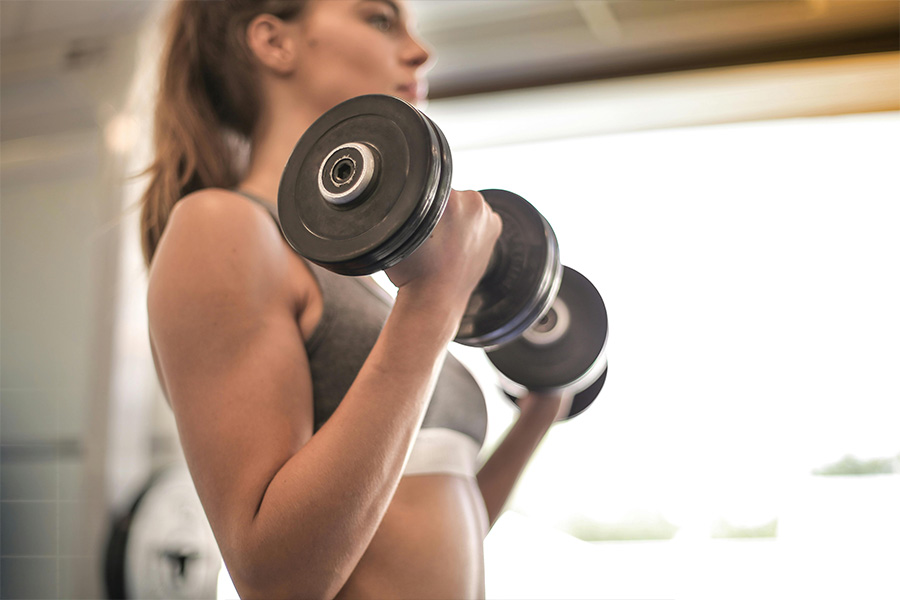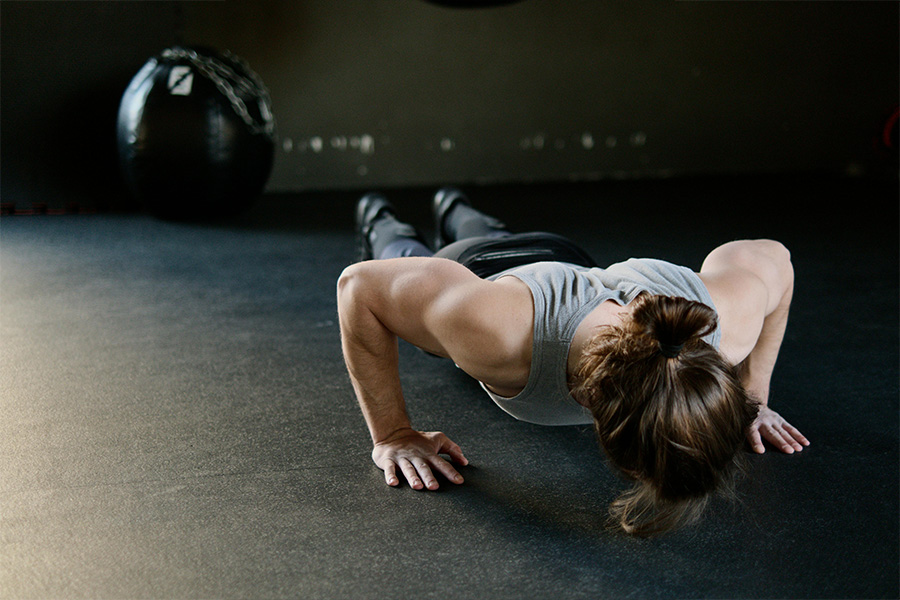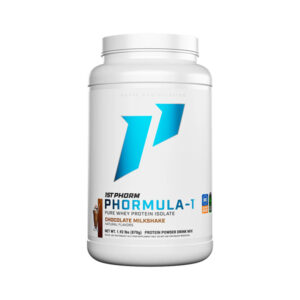How to Make Biceps Bigger at Home: A Step-by-Step Muscle-Building Guide

My fitness journey showed me how biceps changed me. They made my body look better and boosted my confidence. Building bigger biceps is more than looks. It’s about getting stronger arms.
You don’t need a gym to get strong arms. You can do a biceps workout at home. This guide will show you how with bodyweight, dumbbell, and resistance band exercises.
Key Takeaways
- Effective biceps exercises can be done at home.
- A mix of bodyweight, dumbbell, and resistance band exercises is key.
- Consistency is key to building bigger biceps.
- A good workout plan helps you see results faster.
- It’s important to do exercises right to avoid getting hurt.
Understanding Biceps Anatomy and Growth
Before we start, let’s learn about biceps anatomy and growth. Knowing how the biceps work helps us make a good workout plan.
The Structure of Biceps Muscles
The biceps brachii, or just biceps, is a two-joint muscle. It helps bend the elbow and turn the forearm. It has two parts: the long head and the short head.
Long Head vs. Short Head
The long head is on the outside of the humerus. The short head is on the inside. Both help bend the elbow and turn the forearm.
Brachialis and Brachioradialis
Other muscles like brachialis and brachioradialis also help bend the elbow. The brachialis is under the biceps and adds strength during bending.

How Muscle Growth Actually Works
Muscle growth happens when muscles get stronger. This happens when they get damaged and then fix themselves, making them bigger.
Progressive Overload Principle
The progressive overload principle is key for muscle growth. It means slowly adding more weight to challenge the muscles more.
Muscle Protein Synthesis
Muscle protein synthesis (MPS) is also important. It’s how the body makes new proteins to fix and grow muscle.
Why Home Training Can Be Effective
Home training can be as good as gym training if done right. With the right tools and a good plan, you can grow your biceps at home.
My Personal Journey to Bigger Biceps Without a Gym
I started working on my biceps at home. My goal was to make them bigger. I wanted to learn how to do it without a gym.
Where I Started: My Biceps Before
I had small biceps at first. I learned about the muscle’s anatomy and function. I took progress pictures to see how I was doing.
Challenges I Faced Training at Home
One big challenge was staying consistent. I had to keep changing my workout to stay interested.
My Transformation Timeline
Here’s a quick look at my progress:
| Week | Workout Routine | Notable Progress |
| 1-4 | Bodyweight exercises | Increased endurance |
| 5-8 | Dumbbell exercises | Noticeable muscle growth |
| 9-12 | Resistance band exercises | Improved muscle definition |
Lessons I Learned Along the Way
I learned that patience and persistence are key. It’s not just about working out. It’s also about letting your muscles recover and grow.
I also found out how important proper nutrition is for muscle growth.
My journey showed me that you can get bigger biceps at home. It’s all about the right mindset and approach.
Essential Equipment for Home Biceps Training
Training your biceps at home is easy with the right tools. You don’t need much to get started. A few key pieces can help you work out your biceps well.
Minimal Equipment Options
For beginners or those with little space, there are great options. These tools are effective for biceps training.
Adjustable Dumbbells
Adjustable dumbbells save space and are versatile. You can change the weight to fit your needs. They’re perfect for getting stronger.
Resistance Bands
Resistance bands are light, easy to carry, and cheap. They keep tension all the way through your workout. This helps your muscles grow.
Moderate Investment Choices
For a bigger investment, there are better options for your home gym. These can make your biceps training better.
Pull-Up Bar
A pull-up bar is great for more than just pull-ups. You can do assisted chin-ups or biceps curls with bands.
EZ Curl Bar
An EZ curl bar makes biceps curls easier on your wrists. It makes your workout more comfortable.
Creating DIY Alternatives
On a tight budget or like DIY? You can make your own tools from things at home.
Household Items as Weights
Use water bottles or cans as dumbbells. Fill them with sand or water to change the weight.
Makeshift Pulley Systems
Make a makeshift pulley system with a band and a door. It’s like a cable curl machine.
| Equipment | Cost | Benefits |
| Adjustable Dumbbells | Moderate | Versatile, space-saving |
| Resistance Bands | Low | Portable, continuous tension |
| Pull-Up Bar | Moderate | Multi-functional |
| EZ Curl Bar | Moderate | Reduces wrist strain |
How to Make Biceps Bigger at Home: The Core Exercises
You can make your biceps bigger at home without a gym. Just pick the right exercises. Focus on ones that work your biceps from different sides.
Bodyweight Biceps Exercises
Bodyweight exercises are great for starting biceps strength. You don’t need any equipment. Here are some good ones:
Chin-Ups and Variations
Chin-ups work your biceps and other muscles too. Hold a pull-up bar with palms forward. Pull up until your chin is above the bar. Try different grip widths or add weights for more challenge.
Inverted Rows
Inverted rows target your biceps well. Hold a bar or ledge with hands shoulder-width apart. Pull up until your chest is near the bar.
Dumbbell Biceps Exercises
Dumbbells are great for biceps exercises. Here are some top ones:
Standing Biceps Curls
Standing biceps curls are classic. Hold dumbbells with palms forward. Curl them up to your shoulders.
Hammer Curls
Hammer curls work your biceps from the outside. Hold dumbbells with palms towards your body. Curl them up.
Concentration Curls
Concentration curls focus on biceps. Sit on a chair or bench. Hold a dumbbell with your arm on your thigh. Curl it up to your shoulder.
Resistance Band Biceps Exercises
Resistance bands are light and easy to carry. They’re great for biceps. Here are some good exercises:
Band Curls
Band curls are like dumbbell curls but with bands. Hold the band with feet apart. Curl your hands up to your shoulders.
Band Hammer Curls
Band hammer curls work your biceps differently. Hold the band with palms towards your body. Curl your hands up.
Form and Technique Tips
Good form and technique are key for biceps training. Here are some tips:
Common Mistakes I Made
Don’t swing weights or use too much weight. Make sure to fully contract your biceps. Avoid these mistakes for better workouts.
Mind-Muscle Connection
Building a strong mind-muscle connection is important. Focus on squeezing your biceps at the top. Avoid using momentum.
Designing Your Home Biceps Workout Routine
A good biceps workout routine is key for home training. It doesn’t matter if you’re a beginner or advanced. You need a plan that fits your fitness level and goals.
Beginner Biceps Routine
Beginners should start with a simple yet effective routine. Consistency is key when you’re new to working out.
2-Day Split I Used When Starting
I started with a 2-day split routine. It focused on biceps and related muscles. I did dumbbell curls and bodyweight curls.
Progressive Overload for Beginners
As a beginner, progressive overload is important. Increase the weight or reps as you get stronger. This helps you keep making gains.
Intermediate Biceps Routine
When you’ve built a foundation, it’s time to make your workout more intense. An intermediate routine has more volume and complexity.
3-Day Split with Increased Volume
I moved to a 3-day split. I added more exercises and increased the volume. I did hammer curls and preacher curls.
Adding Intensity Techniques
To challenge my biceps, I used intensity techniques. I did supersets and drop sets in my routine.
Advanced Biceps Routine
Advanced trainees focus on maximizing growth. They use more complex and intense workouts.
4-Day Split for Maximum Growth
A 4-day split helped me target my biceps from different angles. This ensured I developed them fully.
Advanced Techniques I Found Effective
Techniques like forced reps and negative reps were effective. They pushed my biceps to the next level.
Incorporating Biceps Training into a Full Body Plan
It’s important to think about how biceps training fits into your overall fitness plan. Balancing biceps workouts with other muscle groups is key for overall muscle harmony.
By tailoring your biceps workout routine to your fitness level and goals, you can make progress. You can achieve bigger biceps at home.
Nutrition Strategies to Support Biceps Growth
Good nutrition is key for building muscles, like your biceps. Without the right food, even hard workouts won’t help much.
Protein Requirements for Muscle Building
Protein is key for growing muscles. It helps fix and grow muscle tissue. So, eating enough protein is important for bigger biceps.
My Protein Sources and Timing
I eat foods high in protein like chicken, fish, and eggs all day. I also have a protein shake after working out to help muscles recover.
Plant vs. Animal Protein
Both plant and animal proteins are good. Animal proteins have all amino acids you need. Plant proteins like beans and lentils need mixing to get all amino acids. I eat both kinds.
Caloric Needs for Biceps Growth
To grow muscles, like your biceps, you need more calories than you burn. This extra energy helps muscles grow.
Finding Your Maintenance Calories
First, find out how many calories you need just to stay alive. Use online tools or apps to figure this out based on your age, weight, height, and how active you are.
Strategic Surplus for Muscle Gain
Once you know your maintenance calories, add a bit more. A good amount is 250-500 calories more. This helps muscles grow without too much fat.
Meal Timing Around Workouts
When you eat can affect how well you work out and recover. Eating right before and after can help your biceps grow.
Pre-Workout Nutrition
Eat a meal with protein and carbs 1-2 hours before working out. This gives you energy and helps muscles work better.
Post-Workout Window
After working out, eat protein and carbs in 30-60 minutes. This helps your muscles recover and grow. It’s a key time to refill energy and fix muscles.
Supplements That Actually Help
While food is best, some supplements can help too. Just pick ones that have science backing them up.
What Worked for Me
Protein powder is easy and helps me meet my protein needs, after workouts. Creatine also boosts my workout performance.
What Was a Waste of Money
I tried many supplements that didn’t work. For example, expensive BCAAs didn’t give me any extra benefits beyond regular protein.
| Nutrient | Role in Biceps Growth | Recommended Intake |
| Protein | Muscle repair and growth | 1.6-2.2 grams/kg body weight |
| Calories | Energy for workouts and recovery | Maintenance + 250-500 calories |
| Carbohydrates | Energy for workouts | 2-3 grams/kg body weight |
Recovery Techniques for Maximum Biceps Development
To grow your biceps, knowing how to recover is key. Recovery is more than just resting. It’s an active process that helps your muscles grow and keeps you safe from injury.
Optimal Rest Between Biceps Workouts
It’s important to give your biceps enough time to rest between workouts. Not enough rest can cause overtraining. This can slow down your progress and make you more likely to get hurt.
Signs of Incomplete Recovery
Not getting enough rest can show in many ways. You might feel sore all the time, perform worse, or feel grumpy. If you see these signs, it’s time to think about changing your workout plan.
Active Recovery Methods
Using light cardio, foam rolling, and self-myofascial release can help your muscles recover faster. Adding these to your routine can really boost your performance.
Sleep’s Impact on Muscle Growth
Sleep is very important for muscle recovery and growth. Your body fixes and builds muscle while you sleep. Try to get 7-9 hours of good sleep each night to help your muscles grow.
How I Improved My Sleep Quality
I got better sleep by sticking to a schedule, having a calming bedtime routine, and making my bedroom sleep-friendly.
“Sleep is the golden chain that ties health and our bodies together.” – Thomas Dekker
This quote really hits home for me. I’ve seen how better sleep can help with recovery and feeling good overall.
Stretching and Mobility Work
Stretching and doing mobility exercises are key for staying flexible and avoiding injuries. Doing these regularly can also make your workouts better.
My Daily Arm Mobility Routine
I do simple exercises like arm circles, wrist extensions, and shoulder rolls every day. These keep my arms flexible and reduce muscle tightness.
Managing Soreness and Preventing Injury
It’s important to handle soreness and prevent injuries when training your biceps. Knowing when to keep going and when to rest is key.
Dealing with Biceps Tendonitis
Biceps tendonitis can happen from too much training or bad form. If you have it, stop the activity that hurts and do exercises to help you heal.
When to Push Through vs. When to Rest
It’s important to know the difference between normal soreness and pain that means you’re hurt. If the pain is sharp or doesn’t go away, it’s safer to rest.
Tracking Progress and Overcoming Plateaus
To grow your biceps, you must watch your progress closely. This means not just looking at how big they get. It also means knowing when your training is working and how to get past plateaus.
How to Measure Biceps Growth Accurately
Measuring your biceps growth right takes a few steps. Consistent measurements are very important.
Taking Consistent Measurements
Measure your biceps every week at the same time. It’s best to do this in the morning before you work out.
Photo Documentation Tips
Take progress photos often. Make sure the lighting is good and the background is simple. This helps show off your muscles.
Signs Your Training Is Working
There are signs your training is paying off, not just in size. These include:
- Increased strength
- Improved endurance
- Better overall muscle definition
Beyond Size: Strength and Endurance Markers
Watch how much weight you can lift and how many reps you can do. These are signs your training is working.
Common Plateaus and How I Broke Through Them
Plateaus happen to everyone. Here are some ways I got past them:
- Changing rep ranges to challenge my muscles differently
- Implementing deload weeks to allow for recovery
Changing Rep Ranges
Switching between high and low rep exercises helps grow your muscles.
Implementing Deload Weeks
Deload weeks let your muscles recover and grow back stronger.
When to Change Your Approach
It’s key to know when your current training isn’t working anymore.
Recognizing Diminishing Returns
If you see your progress stop, it’s time to try something new.
My Biceps Training Evolution
Over time, I’ve changed my training to focus on different parts of my biceps.
Conclusion: Building Impressive Biceps Takes Time and Consistency
Building bigger biceps at home is possible. You need the right exercises, food, and rest. This guide showed you how to start your muscle-building journey.
Being consistent is very important. It’s not just about doing a few bicep curls. You need to work out regularly and keep it up. Dumbbells and resistance bands can help you work your biceps at home.
With a good workout plan, the right food, and rest, you’ll get impressive biceps. Remember, it takes time and effort. Stay focused on your goals and enjoy your progress.
FAQ
What are the most effective exercises for building bigger biceps at home?
To build bigger biceps at home, try bodyweight biceps curls. Also, do dumbbell curls and resistance band curls. These exercises work your biceps from different angles, helping them grow.
How often should I train my biceps to see significant growth?
Train your biceps 2-3 times a week. This lets them rest and grow. Being consistent and adding more weight is key to bigger biceps.
What is the role of nutrition in building bigger biceps?
Good nutrition is key for bigger biceps. You need enough protein and calories to grow muscles. Eating right before and after workouts helps too.
Can I build bigger biceps without any equipment?
Yes, you can grow your biceps without equipment. Try push-ups, chin-ups, and bodyweight curls. They help strengthen and grow your biceps.
How do I track my biceps growth accurately?
To track your biceps, measure them regularly. Also, keep an eye on your workout progress and muscle growth. Progress photos can show you how far you’ve come.
What are some common plateaus in biceps training, and how can I overcome them?
Plateaus can happen when you don’t see progress or feel unmotivated. Change your workout, try new exercises, and focus on lifting more. This can help you break through.
How important is rest and recovery for biceps growth?
Rest and recovery are very important for biceps growth. They let your muscles heal and get stronger. Make sure to sleep well and take rest days when needed.
Can supplements help with biceps growth?
Supplements like protein powder, creatine, and HMB can help. But talk to a doctor before adding them to your routine.





